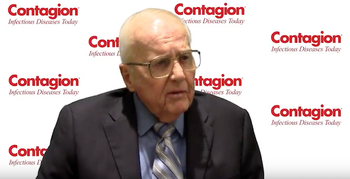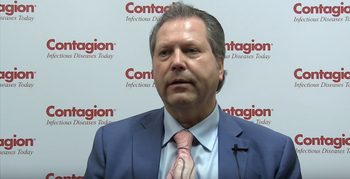
Steven Gelone, PharmD, shares the topline data yielded from the LEAP-1 study.

David Huang, PhD, MD, shares the recent results of the REVIVE-2 trial.

Patrick Horn, MD, PhD, explains why eravacycline is a unique antibiotic and how it stands up against many different types of pathogens, including those that are multidrug-resistant.

James S. Lewis, PharmD, FIDSA, addresses the issues that surround current antibiotic development.

Viviane Boaventura, MD, MsC, PhD, explains how Zika virus causes auditory loss.

William Schaffner, MD, medical director for the National Foundation for Infectious Diseases’ (NFID), provides a brief overview of the past flu season (2016-2017).

Alan Gross, PharmD, explains how a neural network can help identify patients who are at increased risk for multidrug-resistant pathogens.

Silvia Munoz-Price, MD, PhD, explains why infection control bundles should evolve as the problems faced by hospital epidemiologists continue to change.

Alex Rinehart, PhD, explains how the development of a long-acting injectable offers a new preventive option for HIV.

David A. Schwartz, MD, MS Hyg, FCAP, explains how researchers from all over the world have come together to share their research on Zika virus.

Prof. Francisco Veas, PhD, chief security officer, Institut de Recherche pour le Développement, France, explains some of the issues faced by patients with Lyme disease living in Europe.

Hanneke Schuitemaker, PhD, explains the challenges faced when creating a vaccine for HIV.

Magda Opsomer, MD, shares the results of the Phase 3 EMERALD trial for darunavir.

Jessica Justman, MD, explains how decision makers can use the Population-based HIV Impact Assessment Project data.

Viviane Boaventura, MD, MsC, PhD, discusses ongoing research related to auditory complications due to congenital Zika syndrome.

William D. O’Riordan, MD, FACEP, explains what makes iclaprim a unique antibiotic.

David Huang, PhD, MD, explains what the next steps are for iclaprim, an antibiotic developed to treat patients with acute bacterial skin and skin structure infections.

Alan Gross, PharmD, shares the drawbacks of some of the current prediction tools used for pneumonia.

Joergen Richt, DVM, PhD, discusses which animal models are being used to study Zika virus.

Alex Rinehart, PhD, explains if cabotegravir interacts with any other medications.

Silvia Munoz-Price, MD, PhD, explains how the undefined role of a hospital epidemiologist can be problematic.

Jessica Justman, MD, reveals the latest results of the Population-based HIV Impact Assessment Project (2017).

Viviane Boaventura, MD, MsC, PhD, shares how past research has demonstrated that adults can experience Zika-associated hearing loss.

Silvio Pitlik, MD, visiting scientist, Weizmann Institute of Science, Israel, explains how the first Lyme disease patients were misdiagnosed.

Daniel Pilch, PhD, explains how the health care system must change in order to battle antibiotic resistance.

Alan Gross, PharmD, shares how an early diagnosis of multidrug-resistant pneumonia can work towards improving patient outcomes.

Joergen Richt, DVM, PhD, discusses the transmission cycle of Zika virus.

Milena McLaughlin, PharmD, MSc, explains how officials test if a drug is counterfeit or active.

Meghan Jeffres, PharmD, shares what should be considered when considering the incorporation of penicillin skin testing into a health care facility.